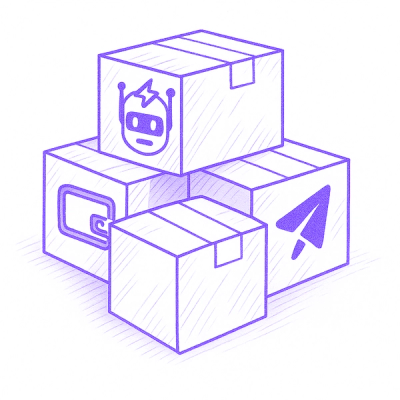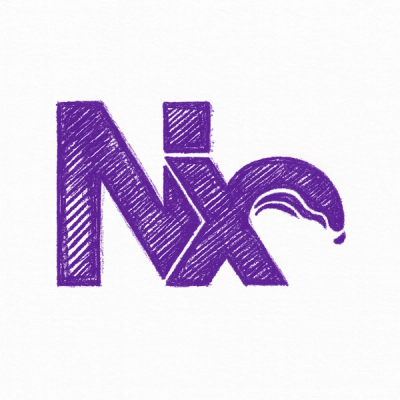
Research
Malicious npm Packages Impersonate Flashbots SDKs, Targeting Ethereum Wallet Credentials
Four npm packages disguised as cryptographic tools steal developer credentials and send them to attacker-controlled Telegram infrastructure.
End-to-End encryption with SNI proxy on top of a TCP multiplexer
[ CLIENT ] --AUTH/CONFIG--> [ SESSION MASTER ] (Trusted connection)
[ CLIENT ] <--FERNET-TOKEN- [ SESSION MASTER ]
[ CLIENT ] --------FERNET-TOKEN---------------------> [ SNITUN ] (Unsecure connection)
[ CLIENT ] <-------CHALLENGE-RESPONSE-(AES/CBC)-----> [ SNITUN ]
<---> <------------------------------>
[ ENDPOINT ] <---> [ CLIENT ] <---------MULTIPLEXER---(AES/CBC)--------> [ SNITUN ] <------EXTERNAL-CONECTIONS-----> [ DEVICE ]
| <---> <------------------------------> |
| |
| <--------------------------------------------------END-TO-END-SSL------------------------------------------------->|
(Trusted connection)
The session master creates a Fernet token from the client's configuration (AES/whitelist) and attaches the hostname and a UTC timestamp until which the token is valid.
{
"valid": 1923841,
"hostname": "myname.ui.nabu.casa",
"aes_key": "hexstring",
"aes_iv": "hexstring"
}
The SniTun server must be able to decrypt this token to validate the client's authenticity. SniTun then initiates a challenge-response handling to validate the AES key and ensure that it is the same client that requested the Fernet token from the session master.
Note: SniTun server does not perform any user authentication!
The SniTun server creates a SHA256 hash from a random 40-bit value. This value is encrypted and sent to the client, who then decrypts the value and performs another SHA256 hash with the value and sends it encrypted back to SniTun. If it is valid, the client enters the Multiplexer mode.
The header is encrypted using AES/CBC. The payload should be SSL. The ID changes for every TCP connection and is unique for each connection. The size is for the data payload.
The extra information could include the caller IP address for a new message. Otherwise, it is random bits.
|________________________________________________________|
|-----------------HEADER---------------------------------|______________________________________________|
|------ID-----|--FLAG--|--SIZE--|---------EXTRA ---------|--------------------DATA----------------------|
| 16 bytes | 1 byte | 4 bytes| 11 bytes | variable |
|--------------------------------------------------------|----------------------------------------------|
Message Flags/Types:
0x01: New | The extra data includes the first byte as an ASCII value of 4 or 6, followed by the caller IP in bytes.0x02: DATA0x04: Close0x08: Ping | The extra data is a ping or pong response to a ping.0x16: Pause the remote reader (added in protocol version 1)0x32: Resume the remote reader (added in protocol version 1)The following environment variables, which, to be effective, must be set before importing this package, are available to override internal defaults:
MULTIPLEXER_INCOMING_QUEUE_MAX_BYTES_CHANNEL - The maximum number of bytes allowed in the incoming queue for each multiplexer channel.MULTIPLEXER_INCOMING_QUEUE_MAX_BYTES_CHANNEL_V0 - The maximum number of bytes allowed in the incoming queue for protocol version 0 channels (default: 256MB, larger than standard channels since v0 lacks flow control).MULTIPLEXER_INCOMING_QUEUE_LOW_WATERMARK - The low watermark threshold, in bytes, for the incoming queue for each multiplexer channel.MULTIPLEXER_INCOMING_QUEUE_HIGH_WATERMARK - The high watermark threshold, in bytes, for the incoming queue for each multiplexer channel.MULTIPLEXER_OUTGOING_QUEUE_MAX_BYTES_CHANNEL - The maximum number of bytes allowed in the outgoing queue for the multiplexer channel.MULTIPLEXER_OUTGOING_QUEUE_LOW_WATERMARK - The low watermark threshold, in bytes, for the outgoing queue for each multiplexer channel.MULTIPLEXER_OUTGOING_QUEUE_HIGH_WATERMARK - The high watermark threshold, in bytes, for the outgoing queue for each multiplexer channel.protocol_version key in the token. If no protocol_version is provided, the server must assume protocol version 0.FAQs
SNI proxy with TCP multiplexer
We found that snitun demonstrated a healthy version release cadence and project activity because the last version was released less than a year ago. It has 2 open source maintainers collaborating on the project.
Did you know?

Socket for GitHub automatically highlights issues in each pull request and monitors the health of all your open source dependencies. Discover the contents of your packages and block harmful activity before you install or update your dependencies.

Research
Four npm packages disguised as cryptographic tools steal developer credentials and send them to attacker-controlled Telegram infrastructure.

Security News
Ruby maintainers from Bundler and rbenv teams are building rv to bring Python uv's speed and unified tooling approach to Ruby development.

Security News
Following last week’s supply chain attack, Nx published findings on the GitHub Actions exploit and moved npm publishing to Trusted Publishers.